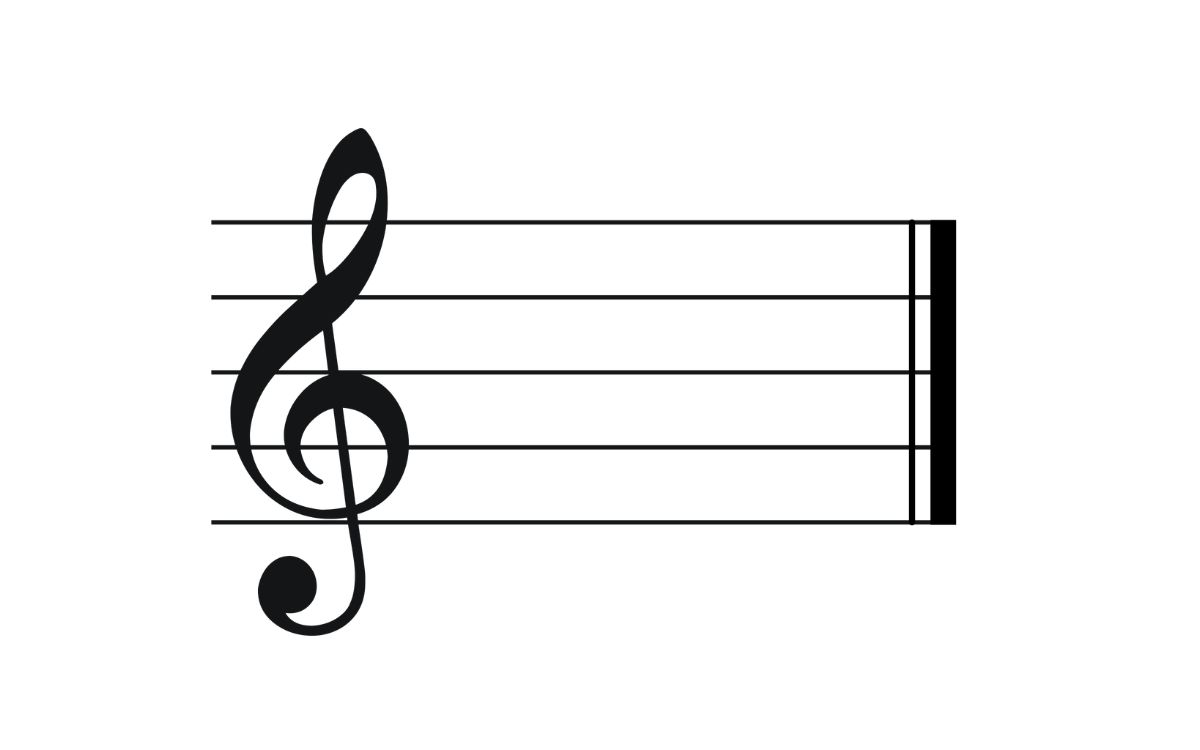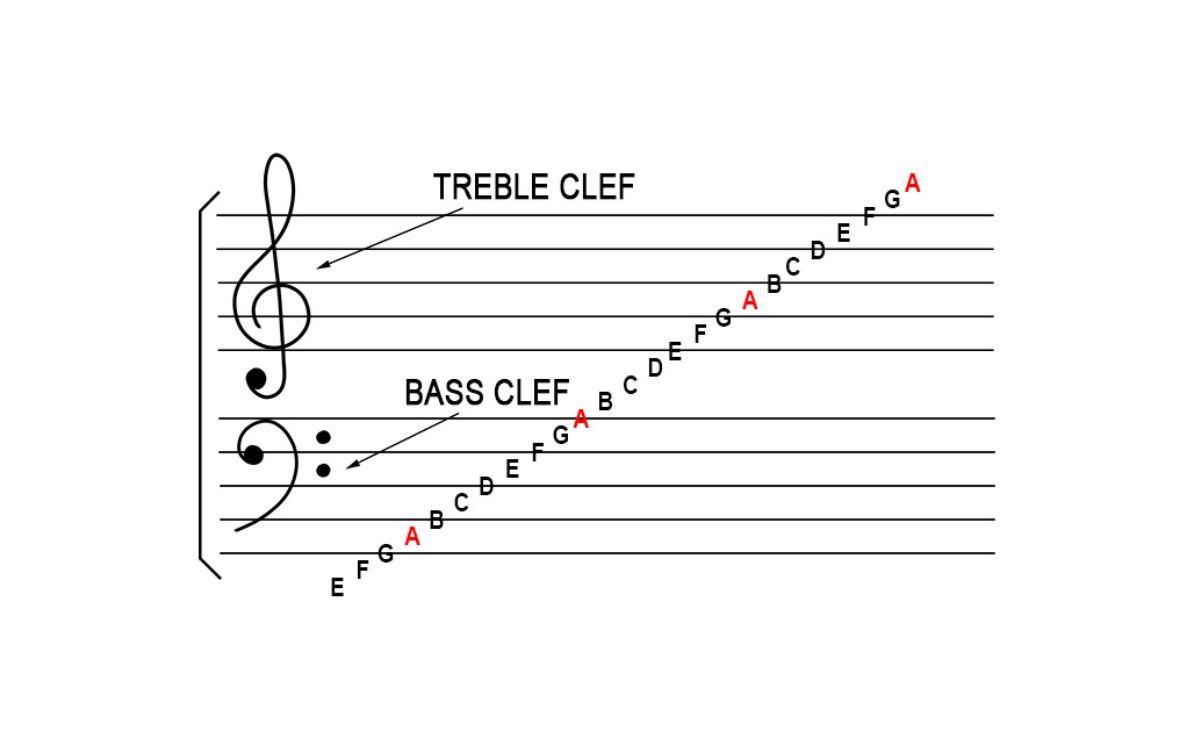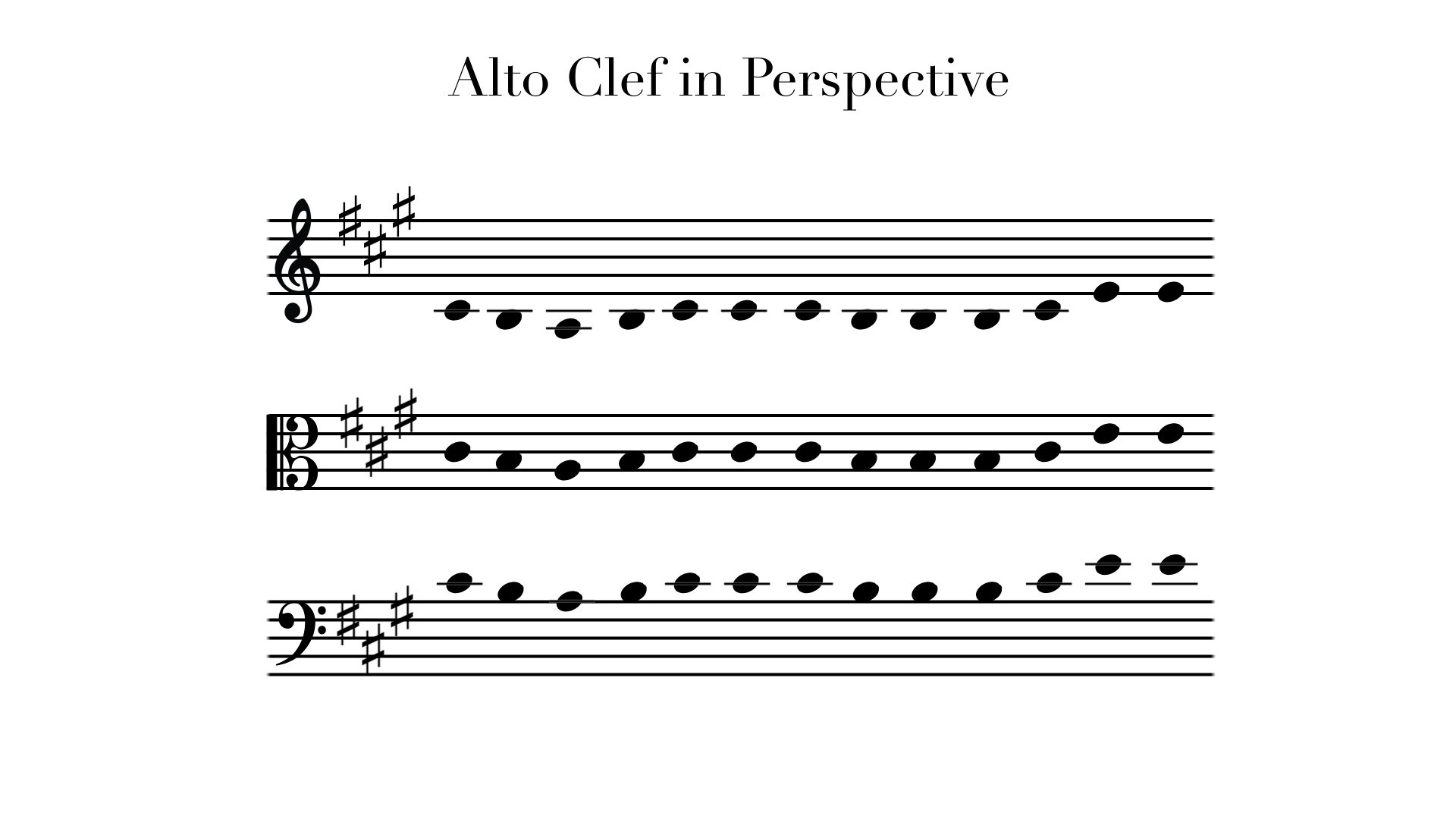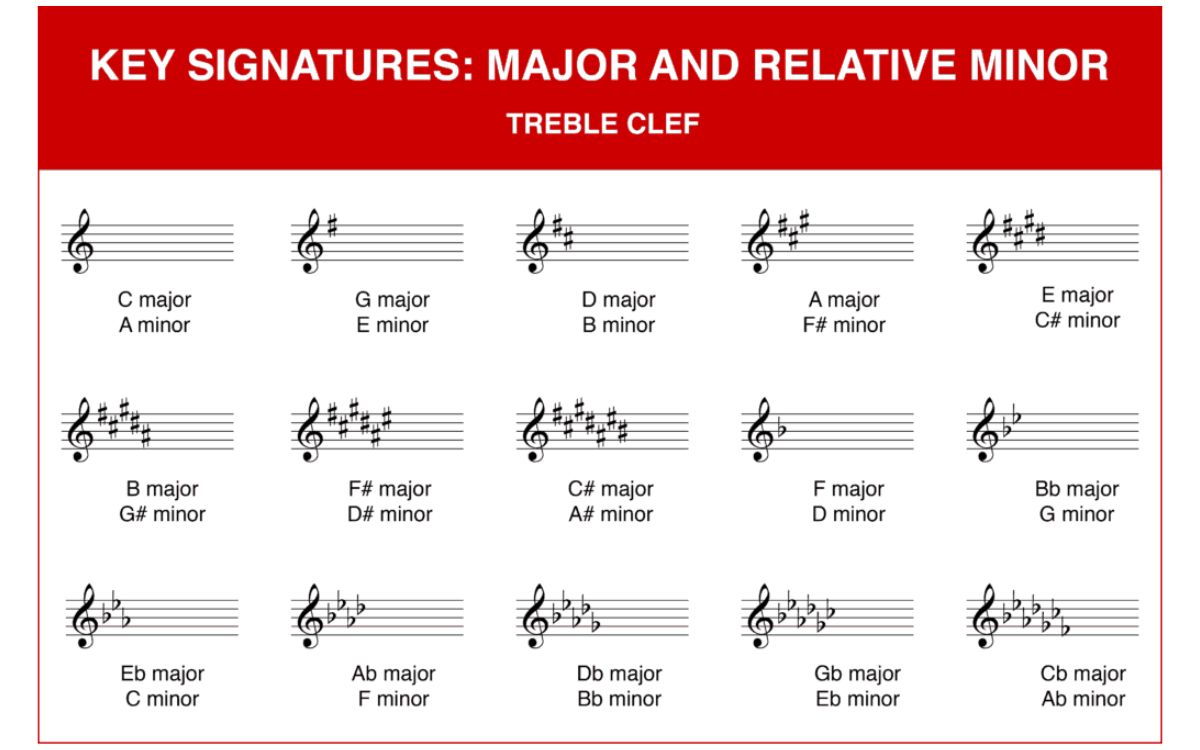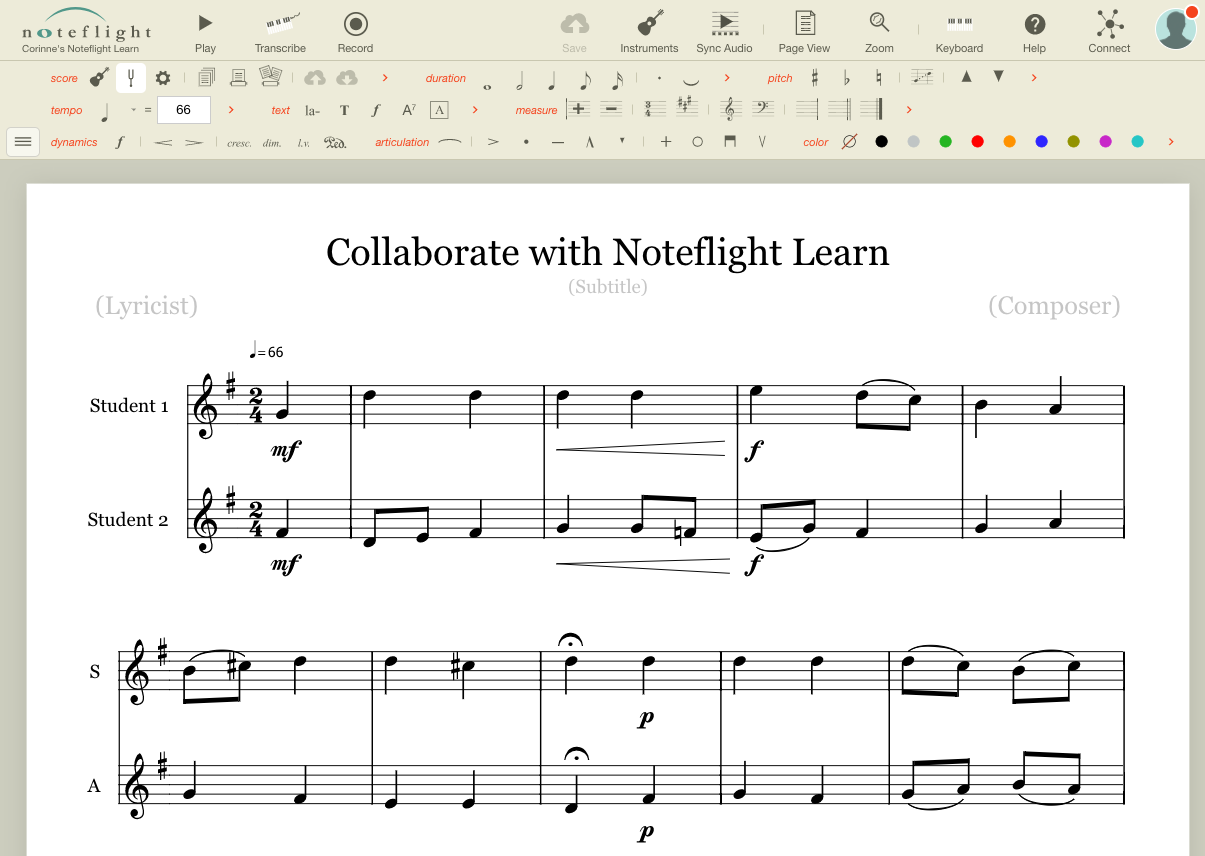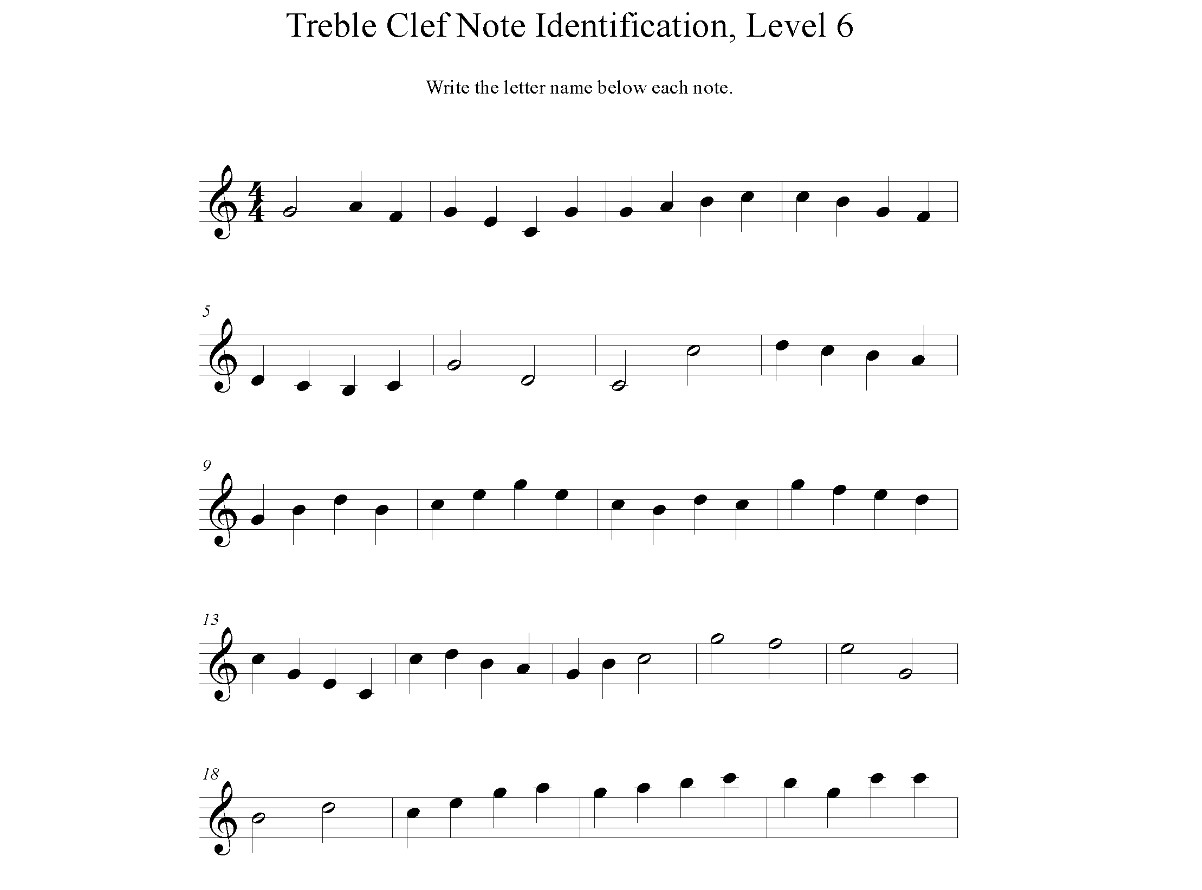Home>Production & Technology>Treble>What Are The Spaces For Treble Clef
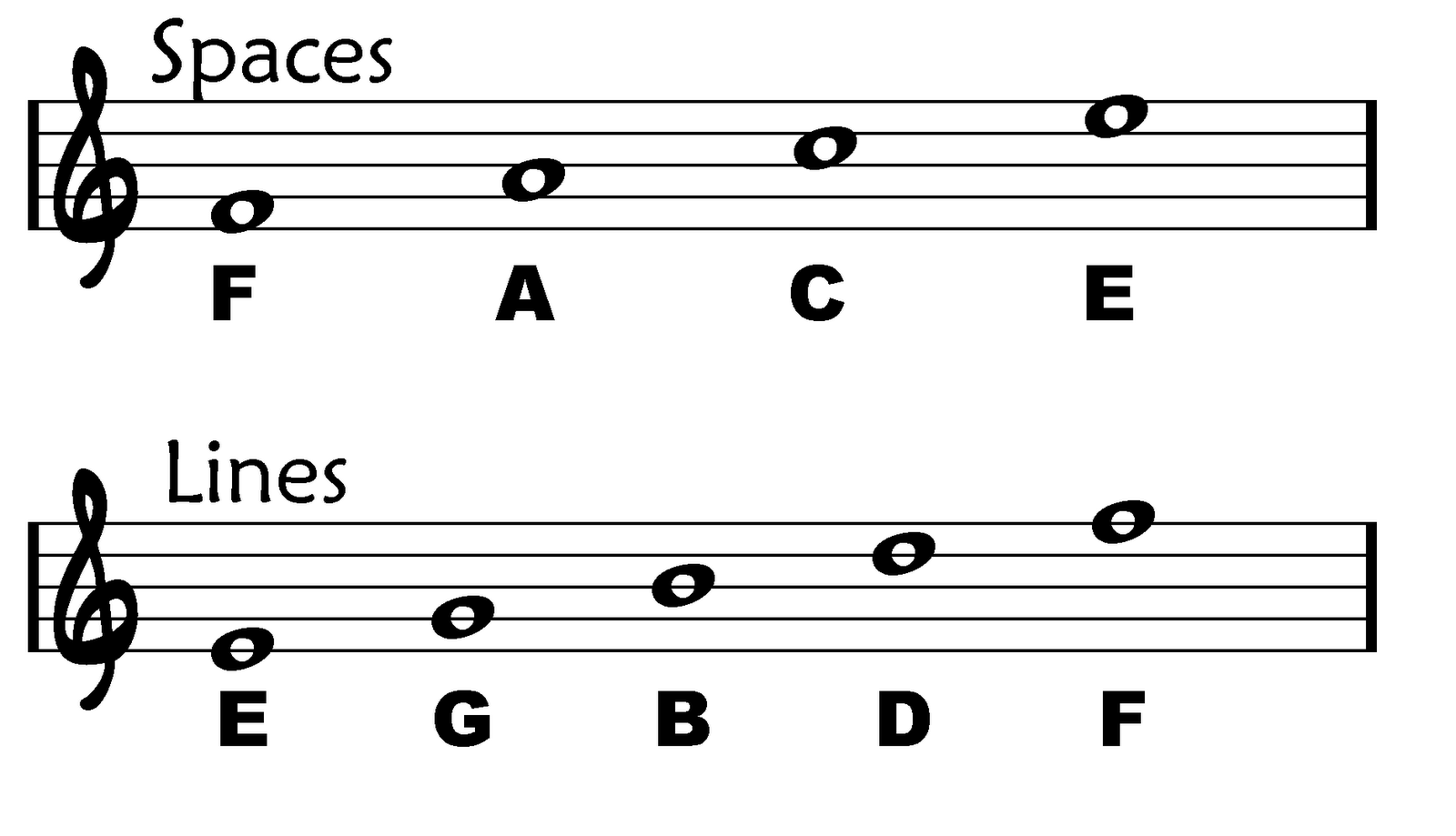

Treble
What Are The Spaces For Treble Clef
Modified: January 22, 2024
Discover the spaces for treble clef and learn how to read sheet music in the treble staff. Get a solid foundation in music theory with expert guidance.
(Many of the links in this article redirect to a specific reviewed product. Your purchase of these products through affiliate links helps to generate commission for AudioLover.com, at no extra cost. Learn more)
Table of Contents
Introduction
When it comes to reading and understanding sheet music, one of the essential elements to grasp is the treble clef. The treble clef is a symbol that indicates the pitch of the notes and is primarily used for instruments like the piano, violin, flute, and trumpet. Understanding the spaces on the treble clef is crucial for musicians, as it helps them identify and play the correct notes.
In this article, we will explore the spaces on the treble clef and their importance in reading and interpreting music. We will dive into the specifics of how to identify the spaces and how they contribute to creating melodies and harmonies in compositions. Whether you’re a beginner musician looking to learn the basics or a seasoned player wanting to refresh your knowledge, this article will provide valuable insights into the world of the treble clef and its spaces.
Before we delve into the details, let’s first define what a treble clef is and its purpose in musical notation.
Definition of Treble Clef
The treble clef, also known as the G clef, is a symbol used in musical notation to indicate the pitch range of notes. It is called the treble clef because it is primarily used for instruments that play in the higher range, such as the piano, violin, flute, and clarinet.
The treble clef symbol consists of a stylized “G” that curls around the second line of the staff. This line represents the note G above middle C, which serves as a reference point for reading notes on the staff. By placing the treble clef on a specific line, it establishes the pitch range of the instrument or voice that should be played.
Sheet music typically uses a combination of clefs to accommodate various instruments and vocal ranges. The treble clef is often used in conjunction with other clefs like the bass clef or the alto clef, depending on the music’s complexity and the instruments or voices involved.
Understanding the treble clef is essential for reading and interpreting sheet music accurately. By identifying the position of the notes on the staff, musicians can play the correct pitches and bring the music to life.
Staff Notation and Clefs
Music notation utilizes a system of lines and spaces called a staff or stave to represent different pitch levels. The staff consists of horizontal lines and the spaces in between them, which collectively create a grid where notes are placed.
Each line and space on the staff corresponds to a specific pitch. To indicate which pitches are represented on the staff, different symbols called clefs are used. Clefs serve as a reference point for musicians, indicating the position of each note on the staff.
While there are various types of clefs, the most common ones in Western music notation are the treble clef, bass clef, and alto clef. Each clef positions a specific note on a different line or space, establishing the pitch range for that instrument or voice.
The treble clef, which we will focus on in this article, is identified by the stylized “G” symbol that curls around the second line of the staff. It indicates that the second line represents the note G above middle C. The notes below and above this line are placed on the subsequent lines and spaces accordingly.
With the treble clef designated for higher-pitched instruments and voices, the bass clef is used for lower-pitched instruments like the cello, bass guitar, and bassoon. The bass clef, also known as the F clef, is identified by its two dots above and below the fourth line, which indicate the position of the note F below middle C.
Another clef often used is the alto clef, primarily employed for the viola and certain vocal ranges. The alto clef is denoted by the symbol resembling a sideways “W,” with the middle of the clef indicating the note C.
Understanding staff notation and the different clefs is crucial for musicians. It allows them to read and interpret sheet music accurately, enabling them to play the correct pitches and create harmonious melodies.
Spaces on the Treble Clef
In the treble clef notation, the spaces located between the lines on the staff hold significant importance. There are a total of five spaces on the treble clef, each representing a specific note in the musical alphabet.
The spaces on the treble clef are counted from the bottom to the top. Starting from the bottom space, which represents the note E, the spaces ascend to represent the notes G, B, D, and finally F in the top space. Remembering the sequence of notes in the spaces can be made easier with the mnemonic device “Every Good Boy Does Fine,” which corresponds to the first letter of each note in the sequence.
Knowing the spaces on the treble clef is essential when reading sheet music and identifying the correct pitches. By recognizing the position of the notes on the staff, musicians can play the corresponding pitches on their instruments or sing them accurately.
It is worth noting that the spaces on the treble clef are not isolated entities but are part of the overall musical composition. They work in conjunction with the lines on the staff to form melodies, harmonies, and chords. The combination of notes on the spaces and lines creates the unique character and expression of a musical piece.
The spaces on the treble clef serve as crucial reference points for musicians to navigate through sheet music and interpret the composer’s intentions. By understanding the placement and relationship of these spaces, musicians can bring life and emotion to the music they play.
Identifying the Spaces on the Treble Clef
Identifying the spaces on the treble clef is a fundamental skill for musicians. It allows them to quickly recognize the pitch of notes and play them accurately. Here is a step-by-step guide on how to identify the spaces on the treble clef:
- Start from the bottom space of the treble clef staff, which represents the note E. This is the space located directly below the first line.
- The next space, moving upwards, represents the note G. It is above the first line and below the second line on the staff.
- The space above the second line represents the note B.
- Continuing upwards, the next space represents the note D.
- Finally, the top space on the treble clef staff represents the note F.
Remembering the sequence of notes in the spaces can be made easier with the help of mnemonic devices, such as “Every Good Boy Does Fine.” Each letter in this phrase corresponds to the first letter of the note represented by each space.
Practicing regularly and familiarizing yourself with the spaces on the treble clef will improve your ability to identify notes quickly and accurately. It is helpful to supplement your learning with exercises that involve naming the notes in the spaces and associating them with their corresponding pitches on your instrument.
Understanding the positioning of the spaces on the treble clef is crucial for musicians of all levels. It forms the foundation for reading sheet music and translating it into beautiful melodies and harmonies.
Importance and Use of the Spaces on the Treble Clef
The spaces on the treble clef play a vital role in music notation and performance. Understanding their significance and effectively utilizing them is essential for musicians. Here are some key points highlighting the importance and use of the spaces on the treble clef:
- Note Identification: The spaces on the treble clef allow musicians to quickly identify and associate the correct pitch with the corresponding note. By recognizing the position of the note within the spaces, musicians can play the correct pitches on their instruments or sing them accurately.
- Building Melodies: The spaces on the treble clef combine with the lines to create melodies. Musicians can utilize the spaces to construct unique melodies that convey emotion, mood, and musical ideas. By incorporating the notes in the spaces, musicians can create beautiful and memorable musical phrases.
- Creating Harmonies: Harmonies, which involve playing or singing multiple notes simultaneously, often make use of the spaces on the treble clef. Musicians can harmonize melodies by incorporating complementary notes from the spaces, creating rich and layered sounds.
- Musical Expressiveness: The spaces on the treble clef contribute to the overall expressiveness of a musical piece. By accurately interpreting the composer’s intentions through the placement and utilization of notes within the spaces, musicians can effectively convey the desired emotions and dynamics of the composition.
- Collaboration and Ensemble Playing: In ensemble playing, such as chamber music or orchestral performances, musicians rely on the spaces on the treble clef to coordinate and synchronize their parts. By reading the musical notation and recognizing their specific roles within the spaces, musicians can contribute their unique voices to create a cohesive and harmonious performance.
Mastering the spaces on the treble clef enhances a musician’s ability to read sheet music and effectively communicate their musical ideas. By understanding their importance and utilizing them skillfully, musicians can showcase their artistic expression and create captivating performances.
Conclusion
The spaces on the treble clef are essential elements of music notation that enable musicians to read and interpret sheet music accurately. By understanding the sequence of notes represented in the spaces, musicians can quickly identify pitches, build melodies, and create harmonies.
The identification and utilization of the spaces on the treble clef are crucial skills for musicians of all levels. By practicing note recognition and familiarizing themselves with the placement of the notes within the spaces, musicians can enhance their ability to read and perform music fluently.
Furthermore, the spaces on the treble clef play a significant role in expressing musical emotions and dynamics. By interpreting the composer’s intentions through the placement of notes within the spaces, musicians can bring life and personality to their performances.
Whether you are a beginner learning the basics of music notation or an experienced musician honing your skills, understanding the spaces on the treble clef is a valuable asset. It allows you to navigate sheet music with confidence, play the correct pitches, and contribute to the overall harmony and expressiveness of a musical piece.
Continue to explore and practice identifying the spaces on the treble clef. With dedication and persistence, you will develop a strong foundation in reading and interpreting sheet music, unlocking new possibilities in your musical journey.

